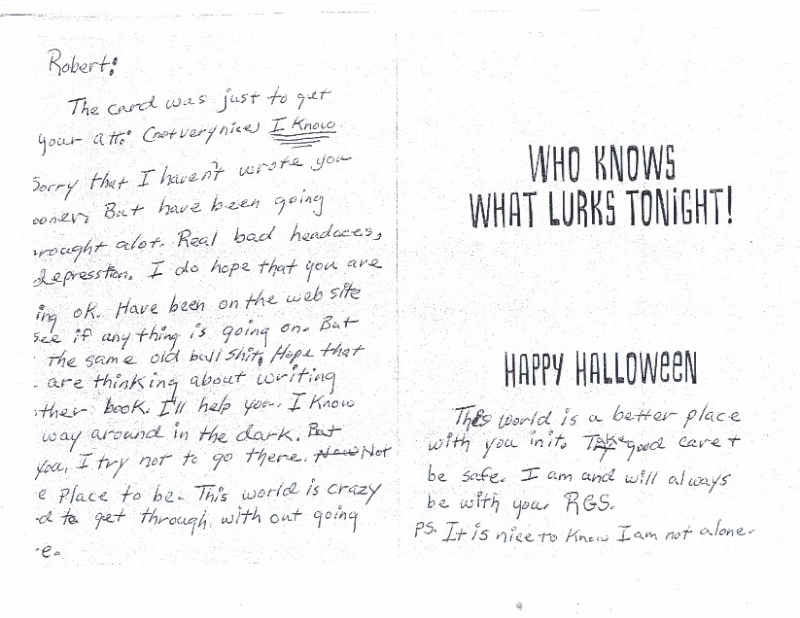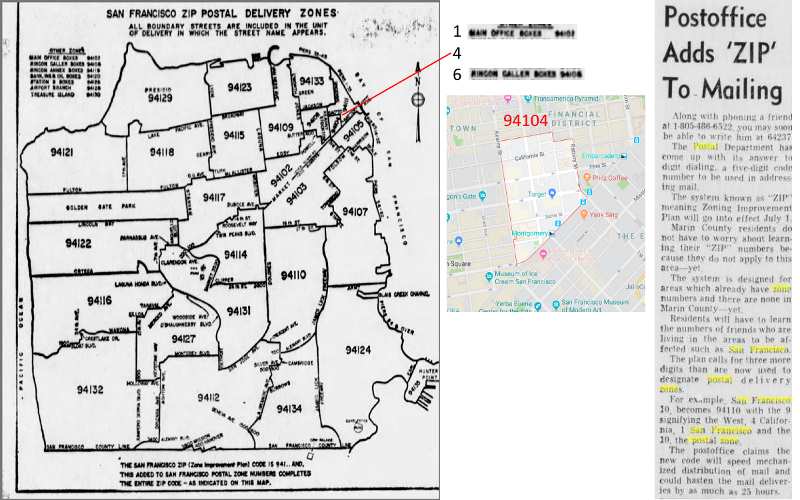Soze, I believe their was some sort of postal strike in 1970. I know it would be difficult to speculate on but Do you think this would have impacted any of the letters ?
From what I have read, when WW2 broke, a lot of the postal workers went into service. To, deliver the mail, the PO had to hire new employees. These employees couldn’t handle the job like the previous skilled workers could. So the PO had to devise a new plan. They created the zip code, where each number, meant something to the postal worker doing the job. So they had problems long before the strike. But I would think if mail was disrupted due to an unskilled workforce then the same would be true for the strike. Or am I missing your point?
Had a thought: if the zip code was implemented in 1963 wouldn’t there be posts in the newspaper about the routes? I don’t have newspapers.com to check. I suppose I could check ancestry.
Soze
Sorry but I can’t get the hand cancelled postmarks out of my head. (There are a number of images on the showing the same style of cancellation, albeit different states, so I think it is safe to assume that they are hand stamped)
I was wondering if this would be a way to ascertain the Postal zones I.E. if 1A or 1B was on strike on a certain day (through cross referencing newspaper articles) could that be used to ascertain what area/district that was, or did it not work like that.
Just out of curiosity if ZIP’s were implemented in 1963 why did the postmarks not include them. Sorry I know this was only a small part of your life but you seem to know more than anybody else.
P.s. I have Newspaperarchive and there is nothing on there, or the California Newspaper Digital Archives.
Additionally if ZIP were introduced in 1963, although they would not be 100% accurate, are we better looking for information in the early 60’s ?
If you have newspapers.com then try in the range of June 1, 1943. I read that there were 178 large cities across the US that used the postal zone number as the last two digits of the zip code and that there were 10 cities in California that did this. Perhaps San Francisco was one of the cities.
Edit: found this before going to bed https://www.google.com/url?sa=t&source=web&rct=j&url=http://www.uspostalbulletins.com/PDF/Vol64_Issue18603_19430604.pdf&ved=2ahUKEwiEg6ekp6TiAhVJbKwKHcB5BDUQFjAAegQIARAB&usg=AOvVaw16FS_bLRbENa054mjKoqNh
As far as the zip in the postmark, between 1963 and 1967 it wasnt mandatory. It became mandatory in 1967 for second and third class mail. Don’t know about first class. So I can’t say why some letters had the zip and others didn’t as I believe them all to be first class letters.
Soze
That’s very strange, because Tom has said for many years that two letters were intercepted at the dropoff location – most likely by eagle-eyed letter carriers that recognized the handwriting. Those two letters were mailed from Taravel & 23rd and Van Ness & Union.
Here is the relevant video:
Here is the relevant thread from Tom’s site:
https://www.tapatalk.com/groups/zodiack … ns#p118175
So, if a mailman discovered the letter at the mailbox, it shouldn’t have a postmark. Any explanations?
This may be one of the intercepted letters.
http://www.zodiackiller.com/discus/messages/28/1052.html?1171560031
Ok I’m going to throw a potential spanner into the works now. Acording to the previous newspaper article i posted it seems as though the last didgit of a Zip code denoted the postal zone.
This shows an alternate explanation as the where the Mailboxes used could have been. The majority are around the North East side of San Francisco.
Below is also a reference of the Companies location from 1969/1970 with the 94106 Code.
Companies? Please explain.
“Murder will out, this my conclusion.”
– Geoffrey Chaucer
Below is also a reference of the Companies location from 1969/1970 with the 94106 Code.
Companies? Please explain.
Businesses
Cragle,
I’m thick. I don’t understand the relationship between the business locations and the zones. This is interesting stuff.
I just don’t get it. Can you break it down for dummies like me? What are you getting at?
“Murder will out, this my conclusion.”
– Geoffrey Chaucer
Ok I’m going to throw a potential spanner into the works now. Acording to the previous newspaper article i posted it seems as though the last didgit of a Zip code denoted the postal zone.
This shows an alternate explanation as the where the Mailboxes used could have been. The majority are around the North East side of San Francisco.
Sorry it is me not explaining myself well.
Using the above map and newspaper article you can reference how the Postal Zones were turned into ZIP codes. 94106 which would have been Zone 6 is listed as Rincon Galler Boxes. Unfortunately this Zone is not shown on the map so the only way of knowing where the 94106 related to was to find Businesses from 1969/1970 which used that ZIP code (these are the red Boxes on the map). From that I summised that they would have been sent from this area and were processed through the corresponding Mail centre (Maybe the letter after the numbers i.e. 4A , 6B. Denoted the processing centre which they went through ?).
Which means that 4 of the mailings over the space of 14ish months(Zones 4 & 6) were all posted within a relatively short area, especially the 4’s. It also interesting to note that right on the edge of the 94106 ZIP sits the SF Chronicle.
I would hazard a guess in relation to the 1A’s & 1B’s as these were Zone 1 (94101) and the Map states that these are Main Office Boxes. The way that they were able to ascertain that they were sent in Richmond was by the use of the letters after the 1 which refered to the processing centre they went through ?
I also dont believe for a second that either the FBI or Police did not find this out at the time especially when you consider there were Postal Inspectors involved, surely that was what they were there for. So it begs the question WHY we have never seen any information on the Postmark locations before ?
Now I’m not saying this correct, it’s just what I have been able to piece together.
In case it’s of any help, here’s another clipping from the 1963 Examiner describing the ZIP system. 94104 is listed as "Rincon North."
If the numbers on the postmarks really do correspond to the last digit of the ZIP code, then "1" is perhaps the most interesting, as it would seem to indicate that the letters were mailed at the main post office, which I believe was at the corner of 7th and Mission back then (it was also the Court of Appeals for the 9th Circuit). Note that 94101 is no longer a valid ZIP code in SF — the main post office has moved.
By the way, which letters had "6" on their postmarks?
In case it’s of any help, here’s another clipping from the 1963 Examiner describing the ZIP system. 94104 is listed as "Rincon North."
If the numbers on the postmarks really do correspond to the last digit of the ZIP code, then "1" is perhaps the most interesting, as it would seem to indicate that the letters were mailed at the main post office, which I believe was at the corner of 7th and Mission back then (it was also the Court of Appeals for the 9th Circuit). Note that 94101 is no longer a valid ZIP code in SF — the main post office has moved.
By the way, which letters had "6" on their postmarks?
1 seemed to denote mail boxes .
07/24/1970 Johns 6B
10/27/1970 Halloween Card 6B
Interesting, caller actually refers to PO Boxes. If this could be verified it would be quite significant.
Interesting, caller actually refers to PO Boxes. If this could be verified it would be quite significant.
Yeah, I was just reading about USPS "caller service" here: https://faq.usps.com/s/article/What-are-Caller-and-Reserve-Box-Services
I wonder if it worked the same way back then?






